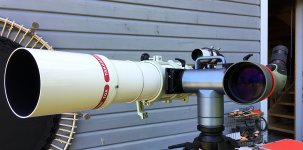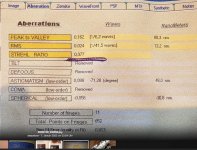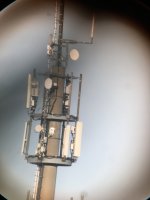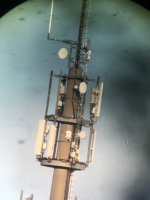paperweight
Well-known member
I recently got a s/h Takahashi TOA 130 telescope, and yesterday I mounted my TSN-99a together with that huge refractor on my AOK Swiss AYOdigi II mount with a Vixen style dovetail bar. The AYO allows a fine adjustment on the left side, so I can really have the two glasses show the same objects (of course with a small deviation).
My first observation yesterday in daylight proved the TSN-99a is the superior glass for terrestrial observation in daylight. I use a Pentax XW 30 eyepiece on the TOA 130 (which results in about 35x magnification), so the 40x of the TE 80 eyepiece on the TSN-99a was about the same.
Over the next weeks, I'll get two or three other eyepieces for the TOA (about 15, 7 and 4mm). For the TSN-99a, I have got two 1.6 extenders which will take the TE 80 to about 100x and the TE 11 to an insane 180x. So there will be some nice comparisons. For the TOA, I will either stay with Pentax XW or try Televue Radian, Delos, Nagler or even Ethos.

My first observation yesterday in daylight proved the TSN-99a is the superior glass for terrestrial observation in daylight. I use a Pentax XW 30 eyepiece on the TOA 130 (which results in about 35x magnification), so the 40x of the TE 80 eyepiece on the TSN-99a was about the same.
Over the next weeks, I'll get two or three other eyepieces for the TOA (about 15, 7 and 4mm). For the TSN-99a, I have got two 1.6 extenders which will take the TE 80 to about 100x and the TE 11 to an insane 180x. So there will be some nice comparisons. For the TOA, I will either stay with Pentax XW or try Televue Radian, Delos, Nagler or even Ethos.








